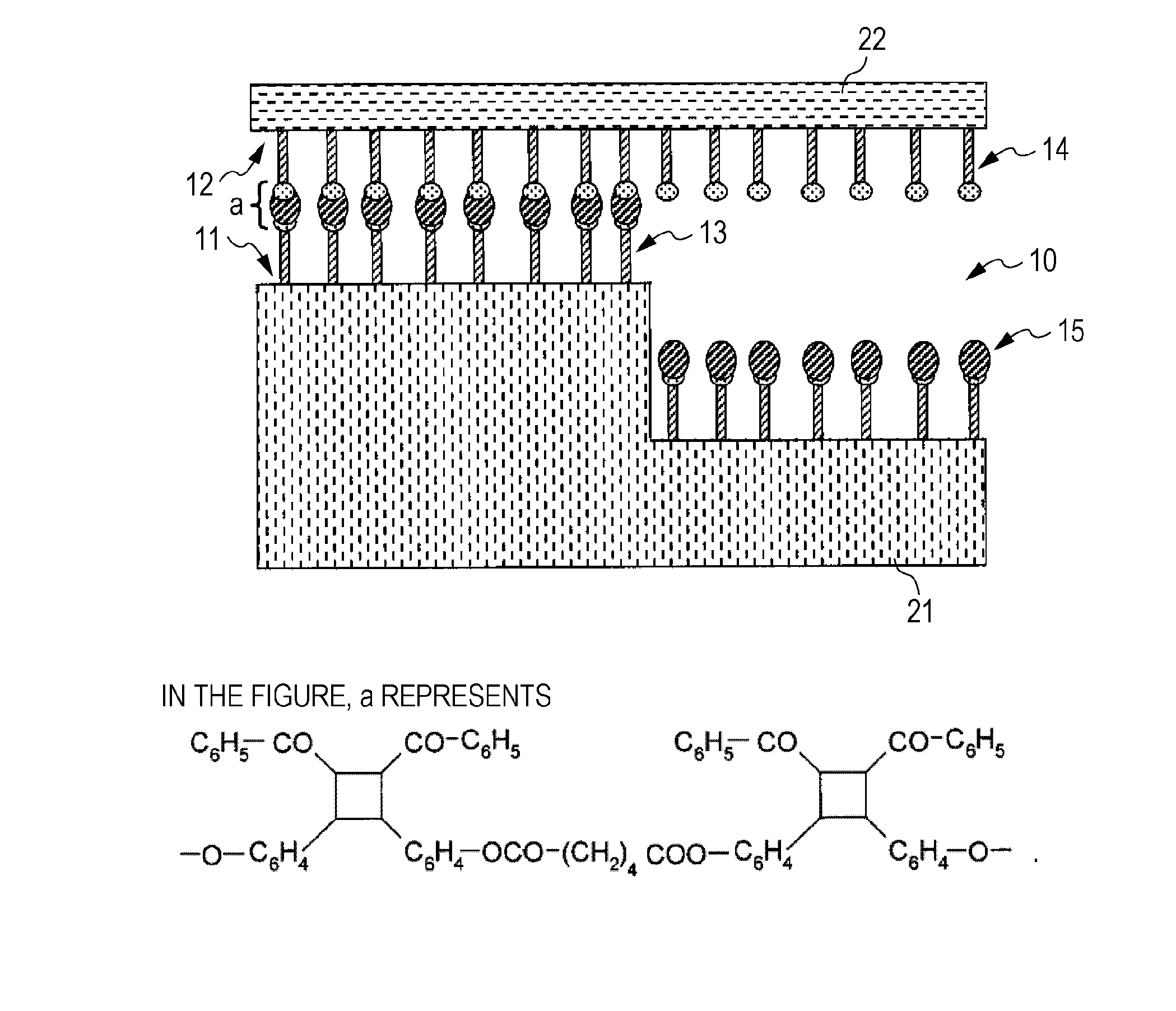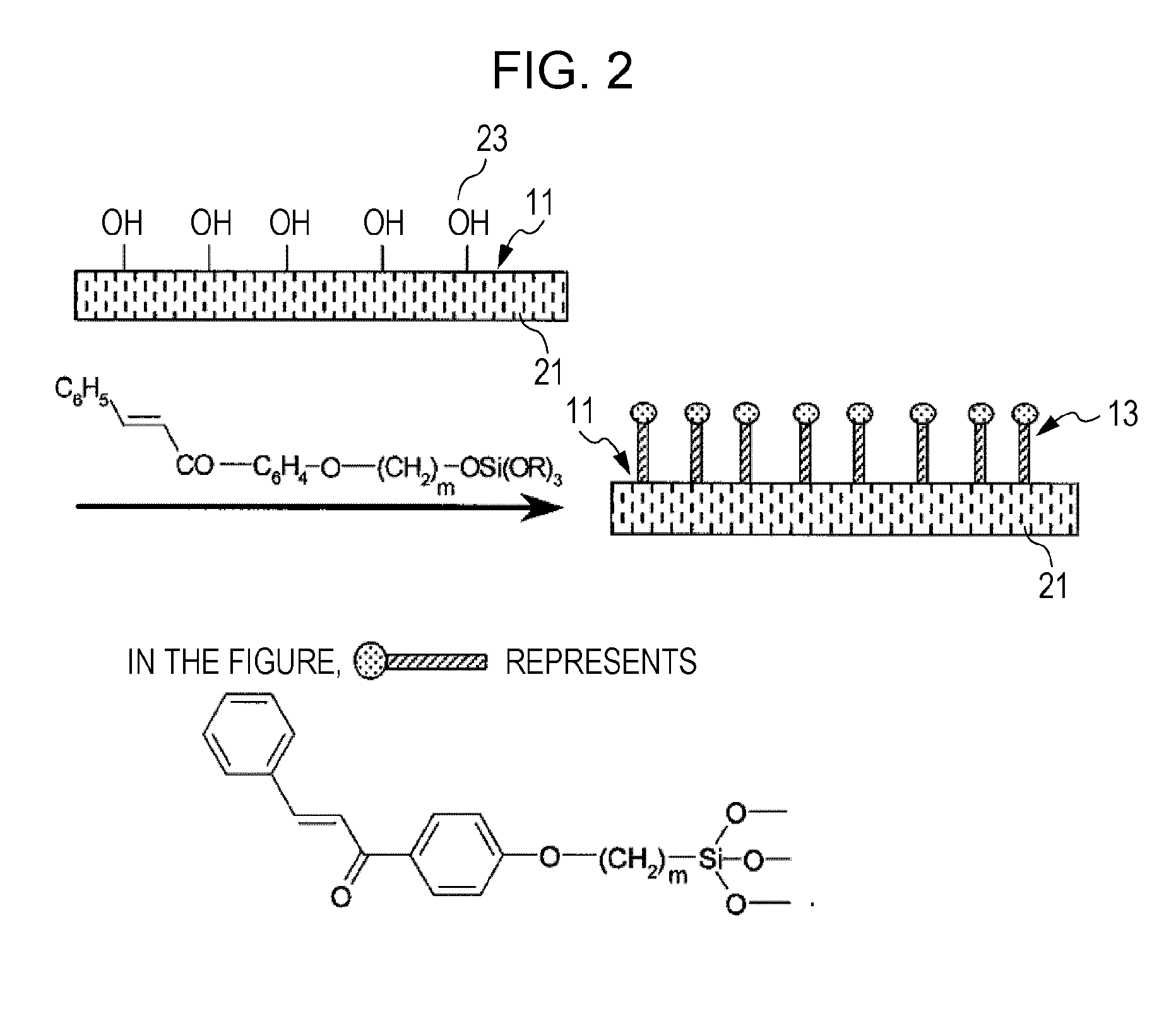Adhesion method, and biochemical chip and optical component made by the same
- Summary
- Abstract
- Description
- Claims
- Application Information
AI Technical Summary
Benefits of technology
Problems solved by technology
Method used
Image
Examples
example 1
Production of Biochemical Chip
[0117](1) Formation of Monomolecular Film of Film Compound Having Chalconyl Group on Joining Surfaces of Biochemical Chip Substrates
[0118]A pair of glass biochemical chip substrates (a channel having a channel width in the range of 10 to 100 μm and a depth of about 50 μm was formed on one of the substrates by photolithography and wet etching) were prepared, sufficiently washed and then dried.
[0119]Subsequently, 0.99 parts by weight of 1-trimethoxysilyloxy-6-(4-chalconyloxy)hexane (Chem. 8) and 0.01 parts by weight of dibutyltin bisacetylacetonate (condensation catalyst) were weighed and then dissolved in 100 parts by weight of hexamethyldisiloxane to prepare a reaction mixture.
C6H5—CO—C6H4—O—(CH2)6—OSiCl3 [Chem. 8]
[0120]The reaction mixture thus prepared was applied onto a joining surface of each of the substrates and allowed to react in dry air (relative humidity: 30% or less) for about two hours. Subsequently, washing was performed with chloroform to...
example 2
Production of Cemented Lens
[0125]Adhesion of a cemented lens was achieved by the same method as in Example 1 using two lenses for a cemented lens. Regarding the resulting cemented lens, discoloration, distortion of the field of view, aberration, interference fringe formation, or the like was not observed.
PUM
| Property | Measurement | Unit |
|---|---|---|
| Time | aaaaa | aaaaa |
| Pressure | aaaaa | aaaaa |
| Adhesion strength | aaaaa | aaaaa |
Abstract
Description
Claims
Application Information
 Login to View More
Login to View More - R&D
- Intellectual Property
- Life Sciences
- Materials
- Tech Scout
- Unparalleled Data Quality
- Higher Quality Content
- 60% Fewer Hallucinations
Browse by: Latest US Patents, China's latest patents, Technical Efficacy Thesaurus, Application Domain, Technology Topic, Popular Technical Reports.
© 2025 PatSnap. All rights reserved.Legal|Privacy policy|Modern Slavery Act Transparency Statement|Sitemap|About US| Contact US: help@patsnap.com



